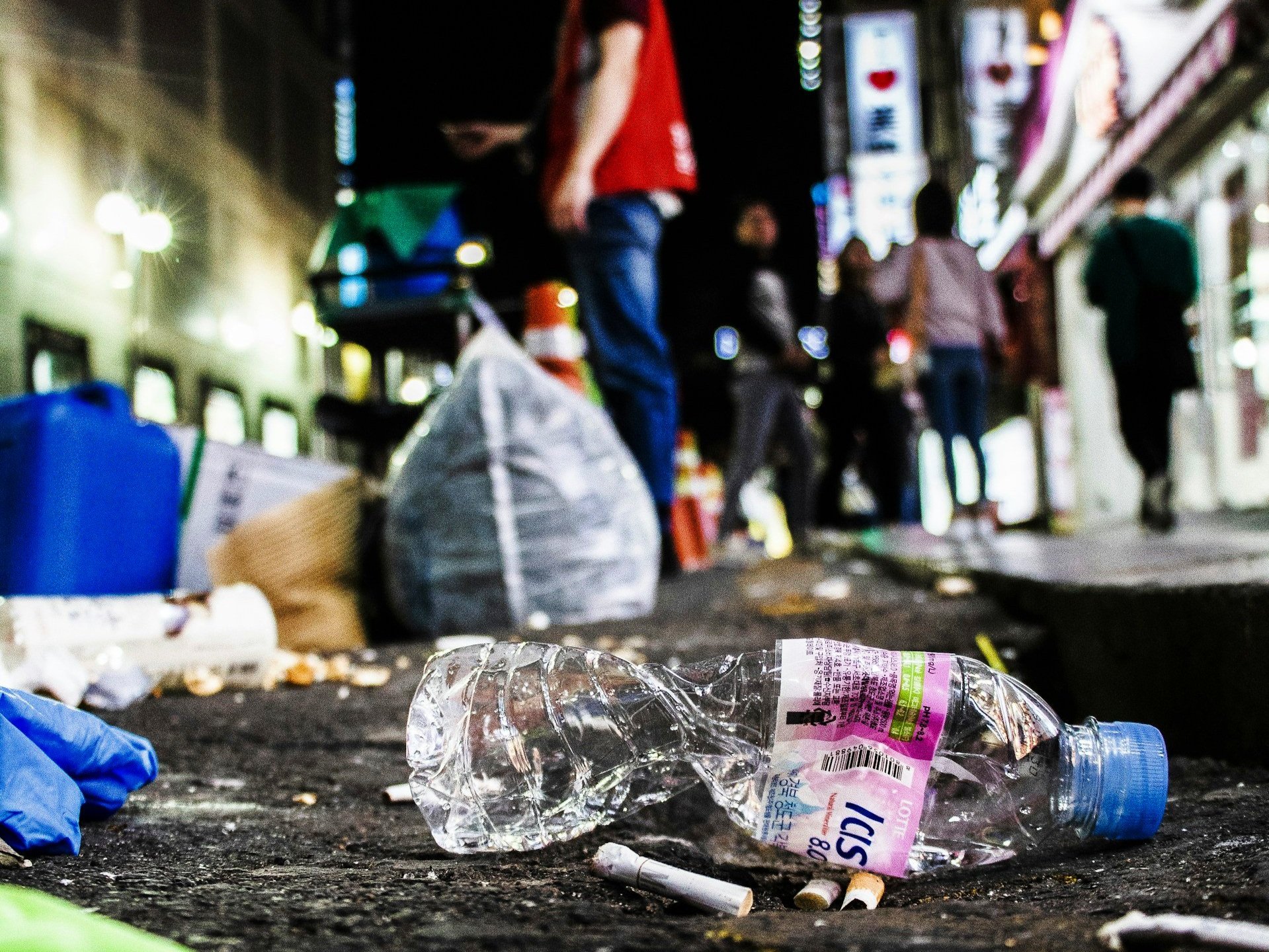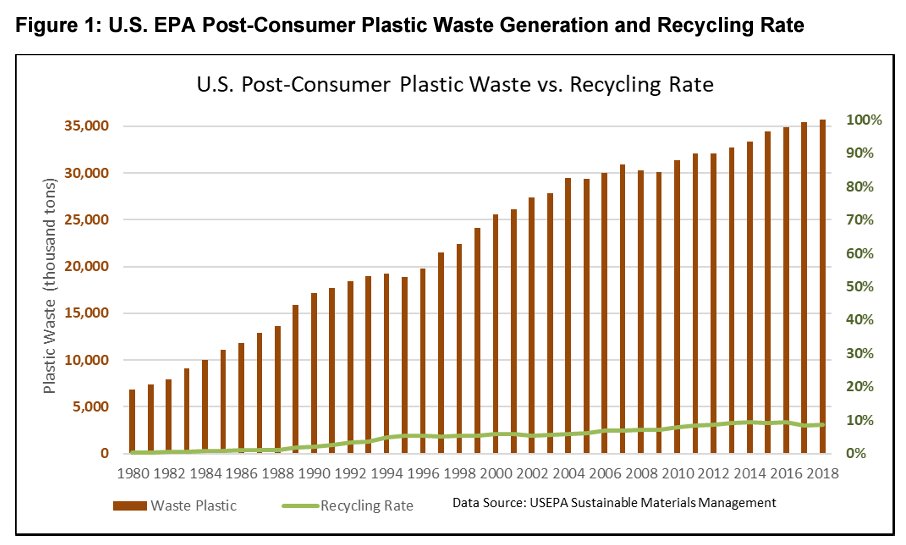In 2025, Businesses Need to Reduce Plastic Waste—Here's Where to Start
Plastic pollution is one of the most significant problems in the climate crisis. Between packaging, footwear, takeaway containers, cigarette butts, and more, 21-25 million tons of plastic waste leaks into aquatic ecosystems, polluting lakes, rivers and seas every year.
The results are disastrous. For the natural world, plastic pollution affects all marine and aquatic biomes, including every living thing. According to the EPA, 1,500 species in marine and terrestrial environments ingest plastics, and plastics produced 3.4% of all greenhouse gas (GHG) emissions in 2019. Without interference, the Organization for Co-operation and Development (OECD) estimates GHG emissions associated with plastics will double by 2060.
Businesses play a big part in this crisis. In a 2024 study, researchers audited 1.8 million global pieces of plastic over a 5-year period. About half of the waste was branded and identifiable. Organizers of the study determined 56 companies were responsible for half the global branded plastic pollution, and just five companies responsible for a quarter of the waste.
The ratio of plastic production vs. plastic waste was 1:1.
No matter the size of a company, more can be done to fight plastic pollution. As You Sow’s 2024 Plastic Promises Scorecard revealed actions are not meeting ambitions, but these are six steps any business can take today.
Understand What Recyclability Really Means
We all know the recycle symbol—three arrows in the shape of a triangle with a number in the middle. But what does that symbol really mean?
The number indicates the type of plastic the product is and generally, the higher the number, the harder it is to recycle. There are also symbols with different numbers for glass and paper.
The problem lies with the actual recyclability. Many plastic items have what’s called “technical recyclability”— in other words, they are recyclable but require a specific type of recycling technology. Since not every municipality offers recycling machinery for every plastic type, some people or businesses are out of luck unless they can work with a third party.
This is why the US lags on recyclability efforts. According to the Environmental Performance Index, South Korea ranks first, earning a score of 67.1 (a score of 100 means a country recycles all recyclable post-consumer material). In contrast, out of 179 countries, the US comes in 105th place with a score of 14.8.
No Plastic—Even Recycled
Given how difficult it is to recycle plastic at all, it’s recommended to eliminate plastic products entirely.
“A laudable number of companies (100) have a goal to reduce use of primary or virgin plastic,” As You Sow’s report says. “Yet the focus on reducing virgin plastic, rather than on reducing overall plastic intensity, paints an inaccurate picture of action toward plastic pollution prevention.”
Virgin plastic is any plastic “produced directly from the raw materials of petroleum or natural gas that has never been used or processed before.” Decreasing the use of virgin plastic is happening concurrently with an overall increase in plastic usage.
Recycled plastic, which many businesses are using more of, is still likely to end up in the landfill, where it takes anywhere from 20-500 years for plastic to decompose. Even then, as the UN states, plastic never disappears, it just gets smaller and smaller, accounting for the microplastics now found in the human body.
Plastic, also, can only be recycled so many times before breaking down and releasing toxins.
Ways to Ditch Plastic from Your Daily Life
Focus on Post-Consumer Waste
Key to fighting plastic pollution is rethinking the issue. Just like the importance of focusing on overall plastic reduction and not just virgin plastic, businesses should consider post-consumer waste over post-industrial waste.
Post-industrial waste is excess material generated during the manufacturing process. It is typically clean and incorporated into other products. Post-consumer waste, meanwhile, is exactly what it sounds like—finished products, used by anyone, business owners and consumers alike. Post-consumer waste “has the greatest propensity to end up as plastic pollution” and should be the primary focus.
Rates of recycling are minimal in the face of waste production.
Whatever the reason—the difficulty of recycling, a lack of motivation and trust, inconvenience or inaccessibility—post-consumer waste is typically not dealt with responsibly and it needs to be.
Reusable and Package-Free Alternatives
So, what is the answer? New packaging.
One option for businesses is reusable packaging and a commitment to the circular economy. In a circular economy, plastic remains in the economy and out of the environment. There are numerous ways to reuse plastic if it must be used, including maintenance, refurbishment, or remanufacturing.
In the food and beverage industry, businesses should consider refillable beverage kegs, returnable ice cream containers, and beyond. For the retail sector, reusable shopping bags and package return programs are key. Any industry can also use reusable shipping containers or crates for the movement of products.
The best possible option, though, is entirely plastic-free alternatives. Many natural ingredients are now used for packaging or dining products, like hemp and fungi, which are compostable. The restaurant industry can also use ceramic or glass dishware for dine-in guests, like mugs in a cafe or bowls at an ice cream joint.
Increase Your Plastic IQ
The Recycling Partnership offers a free tool for any business—Plastic IQ. This tool assesses a company’s current packaging before developing customized strategies using industry best practices to improve packaging sustainability. Businesses can identify actionable steps, receive inspection and get recognized for milestones.
Plastic pollution cannot be controlled if the starting line keeps moving. Tools like Plastic IQ, or sustainability consultants, can help a business figure out its current plastic waste production and what first steps are to reduce that. Often, business owners aren’t sustainability experts, and that’s okay. There’s a lot to know and the science can be complicated. Getting help, and learning more about this issue in the process, is crucial.
More of Your Plastics Questions, Answered
Extended Producer Responsibility
Legislation is another way to combat plastic pollution. Extended producer responsibility (EPR) is part and parcel of a circular economy. The policy, as its name implies, places financial responsibility for packaging onto producers. Most EPR laws tax companies based on units or tonnage of packaging—and sustainable products are taxed lower.
Essentially, these laws incentivize businesses to demonstrably improve packaging waste. More and more states are starting to introduce EPR laws, with over 100 laws enacted across 33 states and product categories.
One bill is Washington’s Post Consumer Recycled Content Law. Producers of common items sold in plastic packaging must register with the state, pay annual fees, and include a minimum amount of recycled plastic in their packaging. The law applies to plastic trash bags and three types of bottles: beverage, cleaning, and personal care.
Plastic pollution is a threat to the very life of this planet and all its inhabitants.
As far back as 1987, researchers found “90% of Laysan Albatross chicks had plastic in their digestive tracts.” Thirty-one years later, researchers discovered 57 Tritrams’ Stormpetrel chicks, another species of seabird found on Laysan, contained plastic.
Use Green America’s Plastic Free Toolkit to begin your plastic journey and discover more green living suggestions, like reducing your carbon footprint and prioritizing sustainable food.




